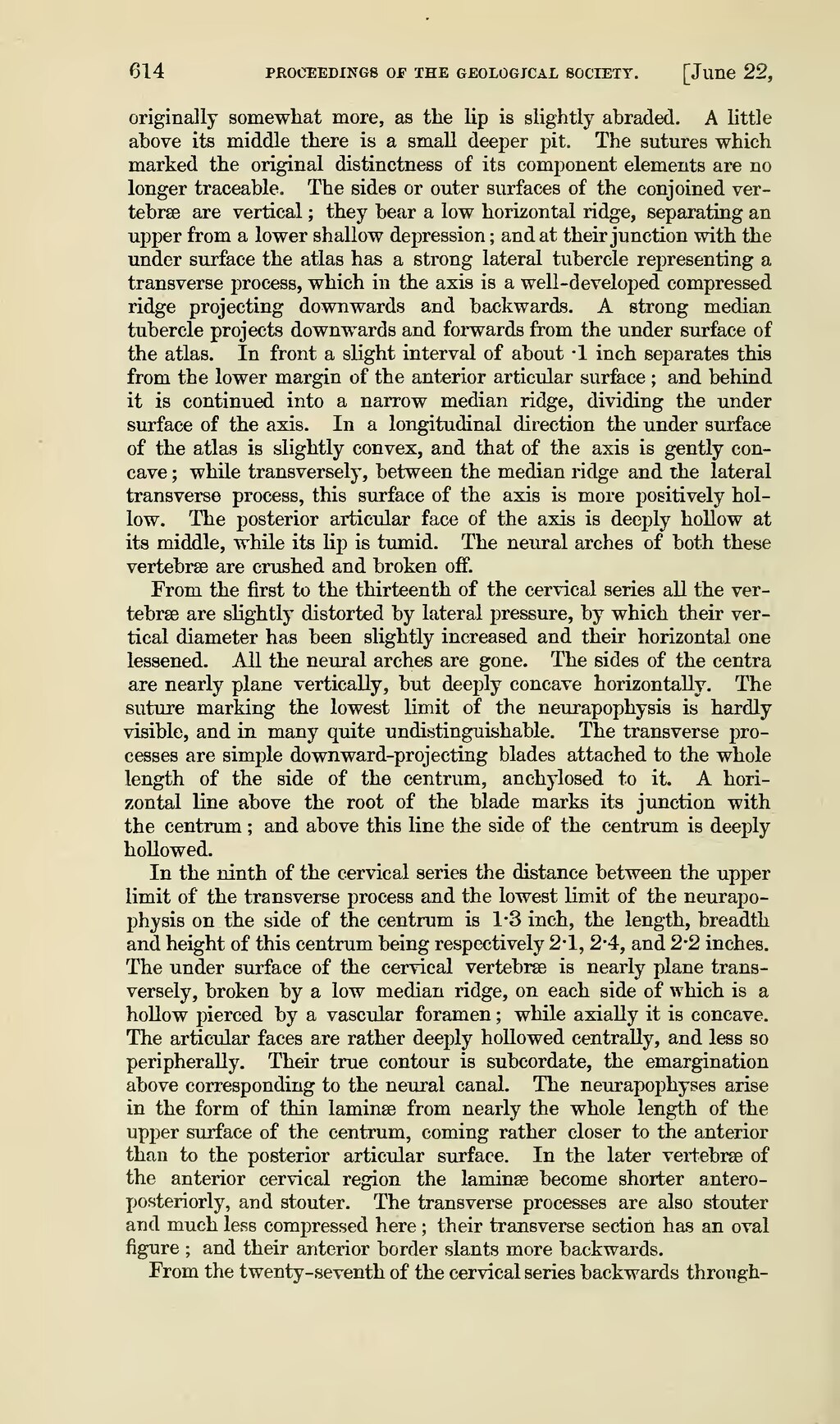originally somewhat more, as the lip is slightly abraded. A little above its middle there is a small deeper pit. The sutures which marked the original distinctness of its component elements are no longer traceable. The sides or outer surfaces of the conjoined vertebrae are vertical ; they bear a low horizontal ridge, separating an upper from a lower shallow depression ; and at their junction with the under surface the atlas has a strong lateral tubercle representing a transverse process, which in the axis is a well-developed compressed ridge projecting downwards and backwards. A strong median tubercle projects downwards and forwards from the under surface of the atlas. In front a slight interval of about .1 inch separates this from the lower margin of the anterior articular surface ; and behind it is continued into a narrow median ridge, dividing the under surface of the axis. In a longitudinal direction the under surface of the atlas is slightly convex, and that of the axis is gently concave ; while transversely, between the median ridge and the lateral transverse process, this surface of the axis is more positively hollow. The posterior articular face of the axis is deeply hollow at its middle, while its lip is tumid. The neural arches of both these vertebrae are crushed and broken off.
From the first to the thirteenth of the cervical series all the vertebrae are slightly distorted by lateral pressure, by which their vertical diameter has been slightly increased and their horizontal one lessened. All the neural arches are gone. The sides of the centra are nearly plane vertically, but deeply concave horizontally. The suture marking the lowest limit of the neurapophysis is hardly visible, and in many quite undistinguishable. The transverse processes are simple downward-projecting blades attached to the whole length of the side of the centrum, anchylosed to it. A horizontal line above the root of the blade marks its junction with the centrum ; and above this line the side of the centrum is deeply hollowed.
In the ninth of the cervical series the distance between the upper limit of" the transverse process and the lowest limit of the neurapophysis on the side of the centrum is 1.3 inch, the length, breadth and height of this centrum being respectively 2.1, 2.4, and 2.2 inches. The under surface of the cervical vertebrae is nearly plane transversely, broken by a low median ridge, on each side of which is a hollow pierced by a vascular foramen ; while axially it is concave. The articular faces are rather deeply hollowed centrally, and less so peripherally. Their true contour is subcordate, the emargination above corresponding to the neural canal. The neurapophyses arise in the form of thin laminae from nearly the whole length of the upper surface of the centrum, coming rather closer to the anterior than to the posterior articular surface. In the later vertebrae of the anterior cervical region the laminae become shorter anteroposteriorly, and stouter. The transverse processes are also stouter and much less compressed here ; their transverse section has an oval figure ; and their anterior border slants more backwards.
From the twenty- seventh of the cervical series backwards through-
